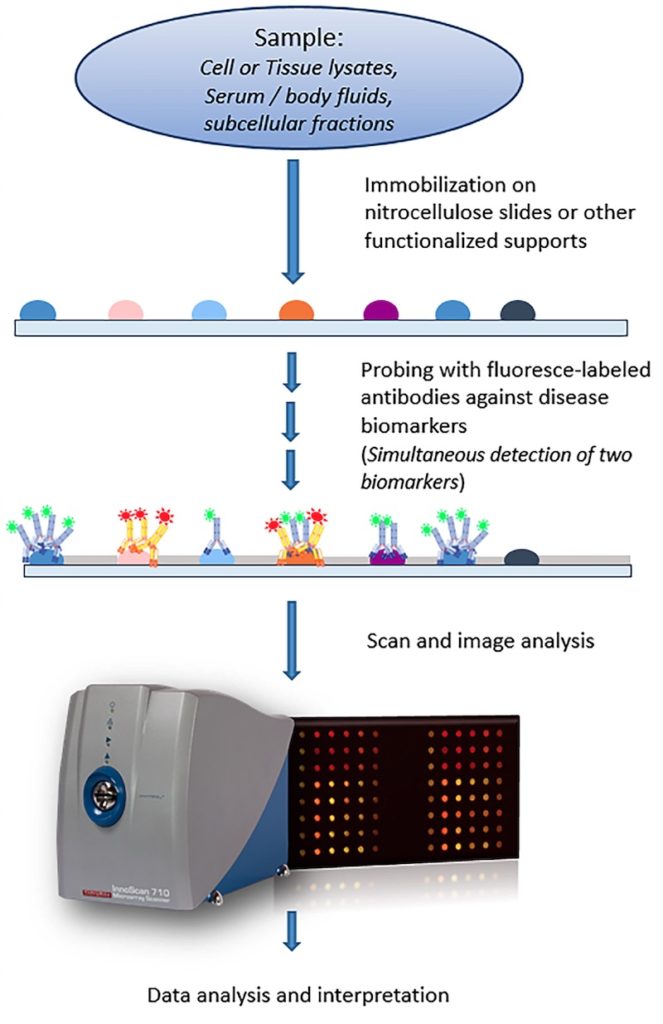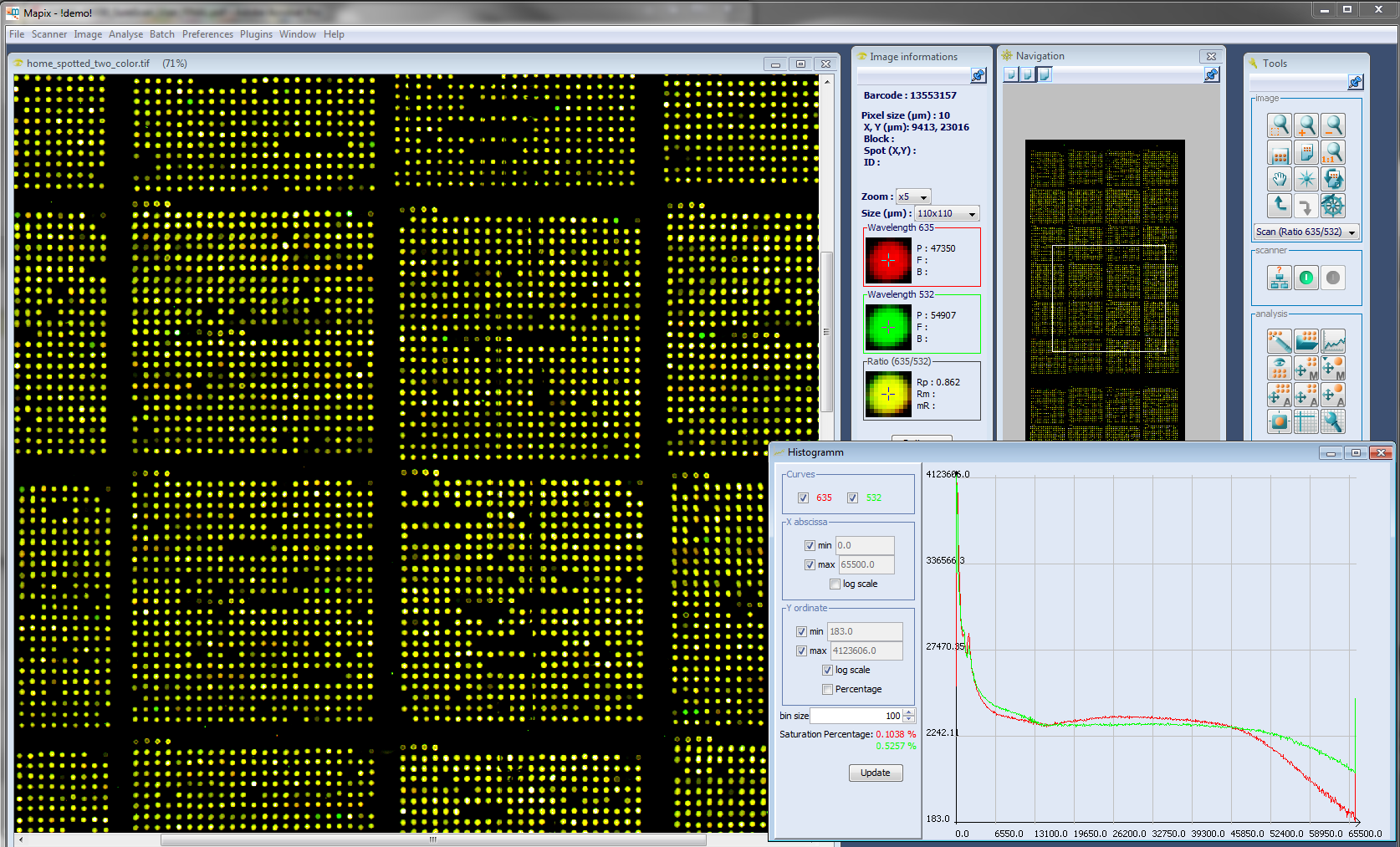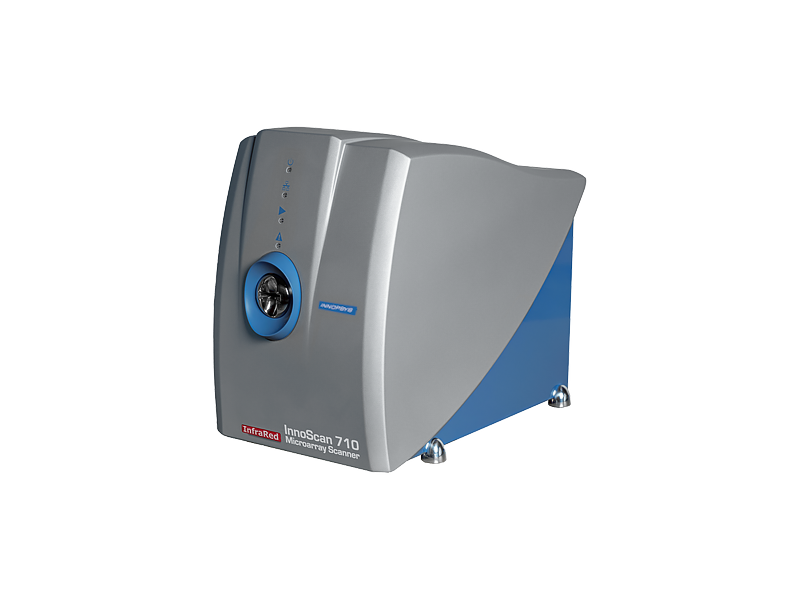Reverse Phase Protein Arrays (RPPA), also named cell lysate arrays, have been shown to be a useful tool for biomarker evaluation in large patient cohorts. Using validated antibodies, biomarkers of cell faith can be followed in a single experiment.
Nitrocellulose slides is most often the substrate of choice for RPPA because of its high protein binding capacity, and since protein expression of a given factor can vary from femto- to micro-molar concentrations, detection sensitivity and dynamic range are two highly critical points to achieve reliable results.
The dynamic range extension (XDR) function in the InnoScan 710-IR scanner has been shown to manage with these critical points with high sensitivity achieved by diminishing nitrocellulose background, while extending the dynamic range from 4 logs to more than 6 logs using the XDR function. This makes it possible to detect low and high signals in a single scan.
Products



